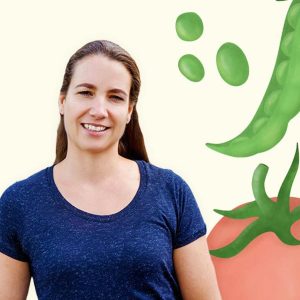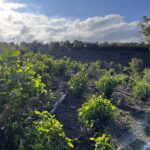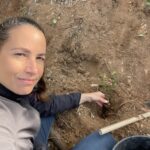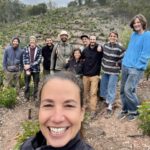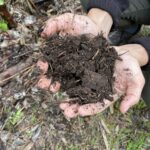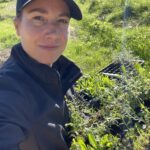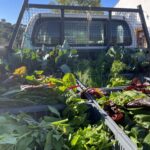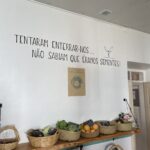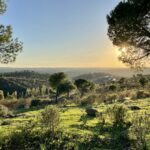Terra Sintrópica transforms almost-desert into a fertile oasis
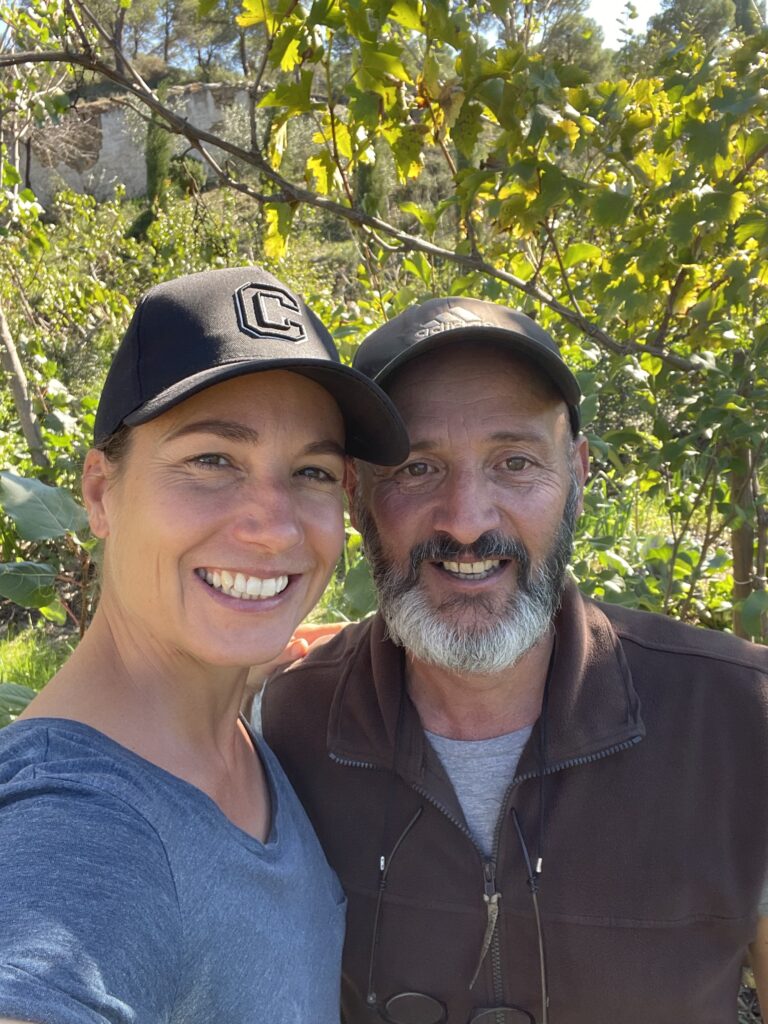
Hope. It seems elusive at times. But with my peasmaker of the week, António Coelho, and his team at Terra Sintrópica, it is precisely hope that colors my week.
(Please note that this text is translated by Open AI. I write my all my peas in Dutch)
I’m working in the dry and rocky Mértola, Portugal, where temperatures can reach 45 degrees for weeks, and rain is scarce. Yet, healthy, delicious, and organic food is produced here in a way that enhances biodiversity and soil health. How, you might wonder? Through syntropic agriculture, a method I’m getting acquainted with this week.
No, syntropic has nothing to do with ‘tropic,’ as I initially thought. It’s a form of agroforestry developed by Swiss visionary Ernst Götsch. In Brazil, he successfully transformed hundreds of hectares of infertile land into extremely fertile ground. Syntropic agriculture can be best described as a way to rapidly establish a biodiverse food forest that not only restores but also enhances soil health.
Green oasis in the desert
A few days ago, as I walked towards Terra Sintrópica, it felt like I was walking through a desert. I saw hills covered with sand, rocks, and small shrubs. This landscape is a stark contrast to what you see when you arrive at Terra Sintrópica. Trees and bushes of various heights are densely planted in strips, each serving its role within the system. Different vegetable varieties grow between the rows. Pruning is done as often as possible, and the biomass is left in place to improve soil health. Water is rarely provided, and pests are almost non-existent. The oldest plot, with substantial trees, is not even four years old.
António has been practicing this method in Mértola since 2017, a town in an area rapidly turning into a desert (much like half of Portugal). Twenty years ago, António fell in love with this region and initially decided to cultivate and dry organic herbs for the export market. In this method, he used black weed cloth to prevent weed growth, with little attention to the soil. After a few years, noticing a decline in production, he delved into soil health, discovering permaculture and syntropic agriculture. Unsure if it would work in his region, he took the leap, bidding farewell to the black plastic.
From plague to delicacy
In 2023, Terra Sintrópica boasts a profitable garden, and the team experiments in the hills of Mértola. These hills are covered with eucalyptus and acacia, considered pests. However, in syntropic agriculture, even exotics can play a role if they serve a function for the overall system. Eucalyptus and acacia provide quickly prunable biomass to fertilize the soil and create shade for vulnerable species. And precisely because they grow rapidly and are everywhere, they can be employed to reintroduce native trees like olive, almond, and carob, which are no longer resilient to extreme conditions.
António doesn’t see Terra Sintrópica merely as a project but as an ongoing process involving the entire community. That’s why volunteers and enthusiasts from around the world are more than welcome. I spend a week with this group, getting to know highly motivated free spirits, including musicians and a cartoonist. They all share a common goal of contributing hands-on to a fruitful future. Every day, we have lunch together at the associated vegetarian restaurant PREC. Here, food enthusiasts are introduced to syntropic agriculture as its fruits literally end up on the plate. Terra Syntrópica also provides education in schools, where small food forests are planted to ignite children’s enthusiasm for all that grows and flourishes.
The urgency to implement syntropic agriculture is nowhere more significant than here due to climate change. Otherwise, producing food under such harsh conditions will soon be practically impossible. However, António and his team are not only serving this region; they are doing crucial groundwork for vast parts of the world that will soon face similar challenges. António no longer has any doubt: this method can work anywhere, and it does. That gives me hope.
P.S. If you want to know more about syntropic agriculture, this illustrated short guide is a good starting point or check out this short video.
Ik ben Chantal en reis door het land in mijn camper searching for peas. Ik maak verhalen vol inspiratie over peasmakers; voedselveranderaars die werken met hun hart en zo de wereld veranderen. Ik ga aan de slag bij ze voor een dag of week. Zo leer ik hun missie beter kennen en kom ik erachter wat hen drijft als persoon. In de tussentijd probeer ik te ontdekken wat het voor mij betekent om een goed leven te leven. Mijn ervaringen deel ik met jullie.
